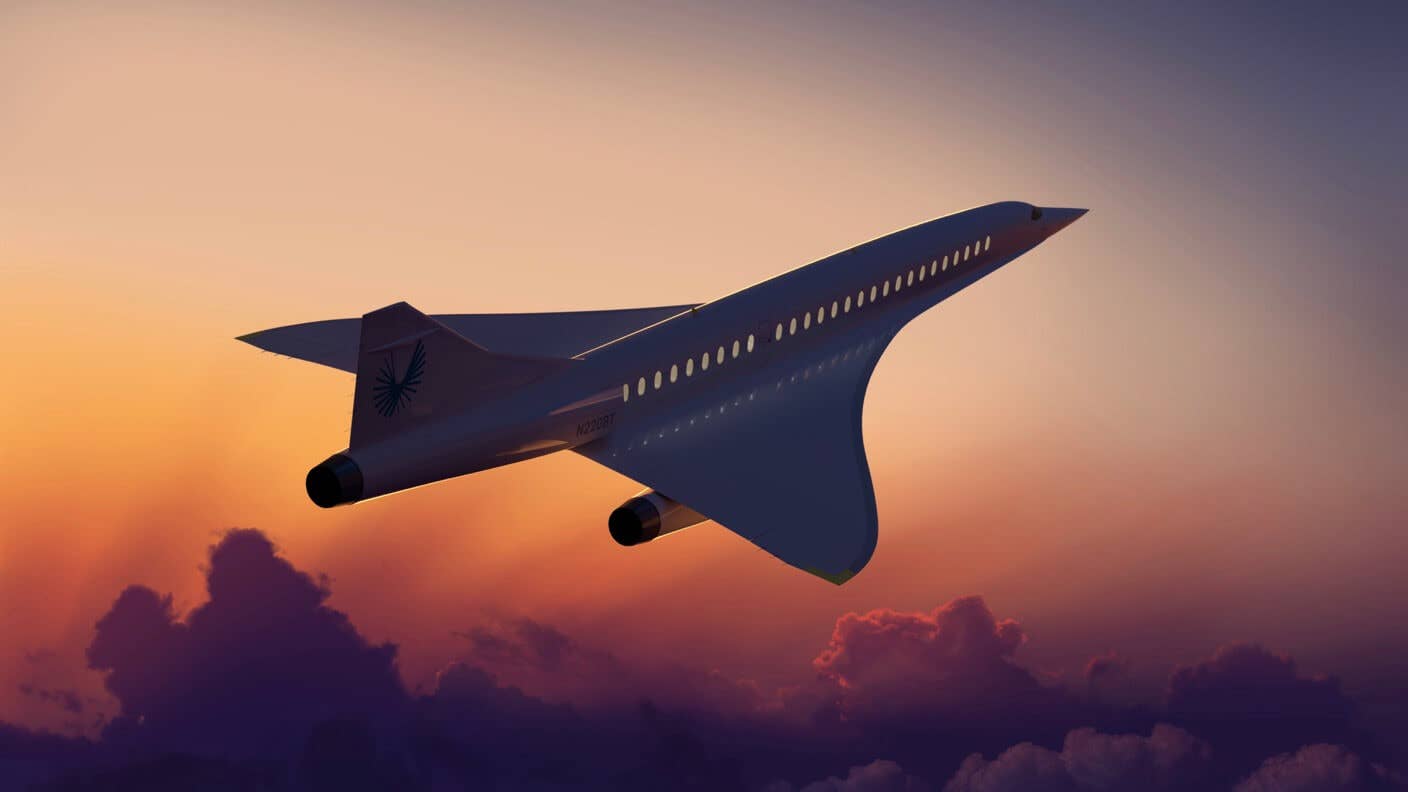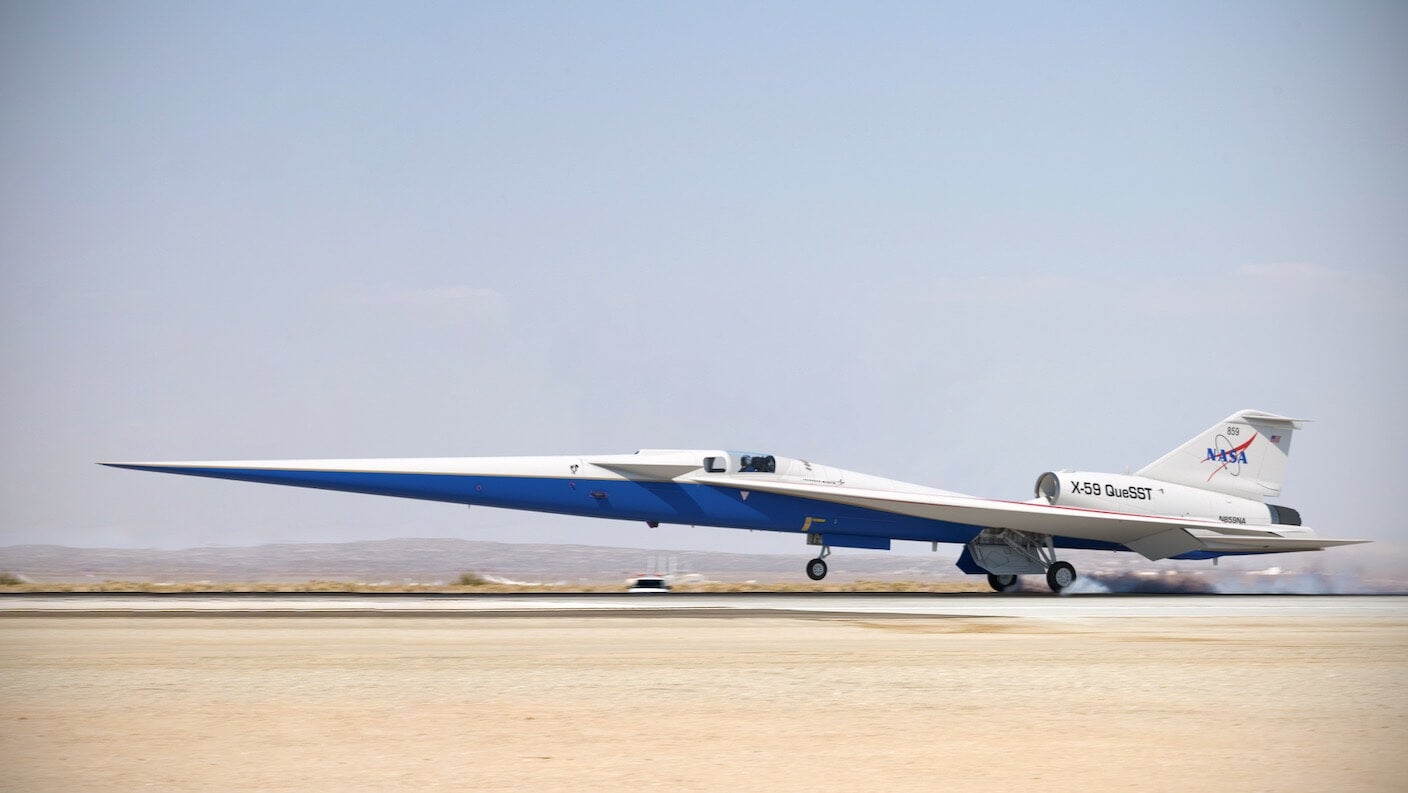The Future of Aviation Will Be Greener and Faster Than Ever Before

Share
While flying cars may someday deliver on the Jetsons-like promise of buzzing around cities in robotic air taxis, the future of commercial aviation is no less tantalizing. Companies large and small are working on cleaning up the skies with electric airplanes, bringing back supersonic travel, and even flirting with the edge of space to transport passengers across the world.
Electric Airplanes Ready for Take Off?
It’s been nearly 50 years since the first battery-powered aircraft, the Militky MB-E1, lifted off using a standard Bosch 10-kilowatt electric motor. There have been plenty of one-off stunts and experimental airplanes showcasing the potential of electrified aircraft in the ensuing decades, from the German e-Genius to Boeing’s hybrid E-Fan X.
But 2019 could prove to be the year that aviation historians mark as the first step toward commercial electric aircraft. Earlier this month, an electric motor developed by an Australian startup headquartered in Seattle, magniX, powered a retrofitted de Havilland Canada DHC-2 Beaver around the harbor outside of Vancouver.
Six months before that, Los Angeles-based startup Ampaire tested its electric propulsion and lightweight battery system aboard a reconfigured Cessna 337 Skymaster in the Californian summer skies. A battery-powered electric motor replaced one of the aircraft’s original two engines, creating what the company calls a parallel hybrid where the internal combustion engine and electric motor work in concert as the plane flies.
“What we’ve created is an electrification package for existing planes,” Cory Combs, co-founder and chief technology officer for Ampaire, told Singularity Hub.
Ampaire isn’t building its own planes—at least not yet—but instead is developing the technology and system integration required to retrofit existing aircraft as electric-fuel hybrids. “Think of us kind of like a flying Chevy Volt: if the front wheels were powered all electric and the back wheels were powered gas and you could shut down either one,” he explained.
It’s been more than 20 years since Toyota introduced the hybrid Prius and more than 10 years since Tesla made all-electric vehicles cool with the Roadster. The advent of electric airplanes has lagged due to three things, according to Combs: weight, weight, and weight.
“It’s all about the weight,” he said. “An electric car can be heavier than a typical car, and that’s fine because the ground’s holding you up. You don’t really lose much efficiency.” That’s thanks to regenerative braking that helps the vehicle recover lost energy. An airplane has no such mechanism, so it must cut weight wherever possible, relying on battery technology developed for the electric vehicle industry.
“When batteries are light enough, we will go all-electric, and planes of increasing size and speed and range will go all-electric over time,” Combs predicted.
Reducing greenhouse gas emissions is one of the key drivers behind the push for electric airplanes from companies like Ampaire and magniX, as well as other competitors such as Zunum Aero (currently in financial straits), Wright Electric, Faradair, and Eviation, among others.
While air travel currently only accounts for about 2.4 percent of global carbon dioxide emissions, the United Nations’ International Civil Aviation Organization predicts aviation could represent 25 percent of the global carbon budget by 2050 based on the need to keep global temperature rise to within 1.5 degrees Celsius above pre-industrial levels. In addition, almost all small planes today still burn leaded fuel, Combs noted, and few if any aircraft carry emissions control systems like a catalytic converter on a car.
“By going electric and hybrid-electric, we’re reducing fuel burn, and we're starting to get that lead out,” said Combs, estimating that Ampaire’s aircraft will reduce emissions by 50 to 70 percent to start.
The Need for Speed
Electric airplanes will be restricted to doing short hops for regional air travel, with a range of about 100 miles for most of the commercial models currently being tested. It’s likely many decades will pass before commercial e-planes with significant passenger capacity will be able to cross continents or oceans.
Supersonic jets like the retired Concorde, however, once made the leap from New York to Paris in about 3.5 hours. Supersonic jets fly faster than the speed of sound, referred to as Mach 1, which is about 760 miles per hour (though it varies based on air temperature and other factors).
There are dozens of military and experimental aircraft—not to mention weapons, some of which can travel at hypersonic speeds of Mach 5 and beyond—capable of traveling faster than the speed of sound.
However, commercial supersonic travel ended with the last flight of the Concorde on October 24, 2003. While economic and safety factors certainly played a role in retiring the innovative aircraft, inefficient fuel use and excessive noise pollution from the sonic boom created by traveling faster than the speed of sound also led to its demise.
Yet it’s possible we’ll see the return of supersonic commercial travel in years rather than decades, as engineers solve the sonic boom problem and improve fuel efficiency.
Major aerospace companies Lockheed Martin and Boeing are both developing new supersonic jets. The former has a nearly $250 million contract with NASA to prove a new design that will turn the boom into a thump. The space agency just announced that final assembly of the X-59 Quiet SuperSonic Technology (QueSST) was under way.
Be Part of the Future
Sign up to receive top stories about groundbreaking technologies and visionary thinkers from SingularityHub.



Image Credit: Lockheed Martin.
A number of startups are also jumping into the supersonic cockpit, including Aerion Corporation, Boom, Spike Aerospace, and Hermeus. Only Denver-based Boom appears to be working on a supersonic airplane, dubbed Overture, that is not targeted for the private jet market.
The startup, which has raised about $150 million in funding, says Overture will initially carry 55 passengers at speeds of Mach 2.2. Among the technological advancements are thermal-tolerant composite materials that enable better aerodynamics, longer airframe life with minimal maintenance, and greater fuel efficiency.
Boom also uses advanced computer simulations to test thousands of design iterations rather than costly and time-consuming physical models and wind tunnel testing.
“The result of newer technologies is a much higher level of aerodynamic optimization and efficiency. Overture will be faster, quieter, more affordable to build, and more fuel efficient than the engineers of the 1960s could have imagined,” the company wrote in a recent blog post.
The Overture could enter service by the mid-2020s, according to Boom.
The Sky's Not the Limit
Meanwhile, companies like Blue Origin, Virgin Galactic, and SpaceX may one day take passengers to the edge of space en route from New York to Paris in less than an hour.
Space tourism has always been on the radar of these giants of the New Space industry, but city-to-city rocket travel could prove to be even more lucrative in the long term.
SpaceX CEO Elon Musk first floated the idea a couple of years ago, saying the company’s reusable rocket would transport passengers from floating landing pads near major cities. Earlier this year, Swiss investment bank UBS predicted long-distance suborbital travel could turn into a $20 billion business.
UBS didn’t provide an exact timeline for when suborbital rocket travel will take off, but it’s safe to say that it probably won’t happen in the next decade. The technology will need to go through a long and stringent safety process before regulatory agencies will allow companies to strap hundreds of people onto a highly explosive rocket.
The infrastructure to support city-to-city rocket travel will also take years to build, though the boom in spaceports that has accompanied the rapidly growing rocket launch industry represents the first step toward that goal.
The future of aviation isn’t reliant on just one technology or breakthrough. It’s a process that builds on the successes and failures of the past, whether it’s building lighter batteries to power electric airplanes or advances in engineering than enable aircraft to travel faster than the speed of sound more efficiently.
The future of aviation is greener, faster, and higher—and coming to a galaxy near you.
Image Credit: Boom
Formerly the world’s only full-time journalist covering research in Antarctica, Peter became a freelance writer and digital nomad in 2015. Peter’s focus for the last decade has been on science journalism, but his interests and expertise include travel, outdoors, cycling, and Epicureanism (food and beer). Follow him at @poliepete.
Related Articles

AI Companies Are Betting Billions on AI Scaling Laws. Will Their Wager Pay Off?

Super Precise 3D Printer Uses a Mosquito’s Needle-Like Mouth as a Nozzle

Is the AI Bubble About to Burst? What to Watch for as the Markets Wobble
What we’re reading